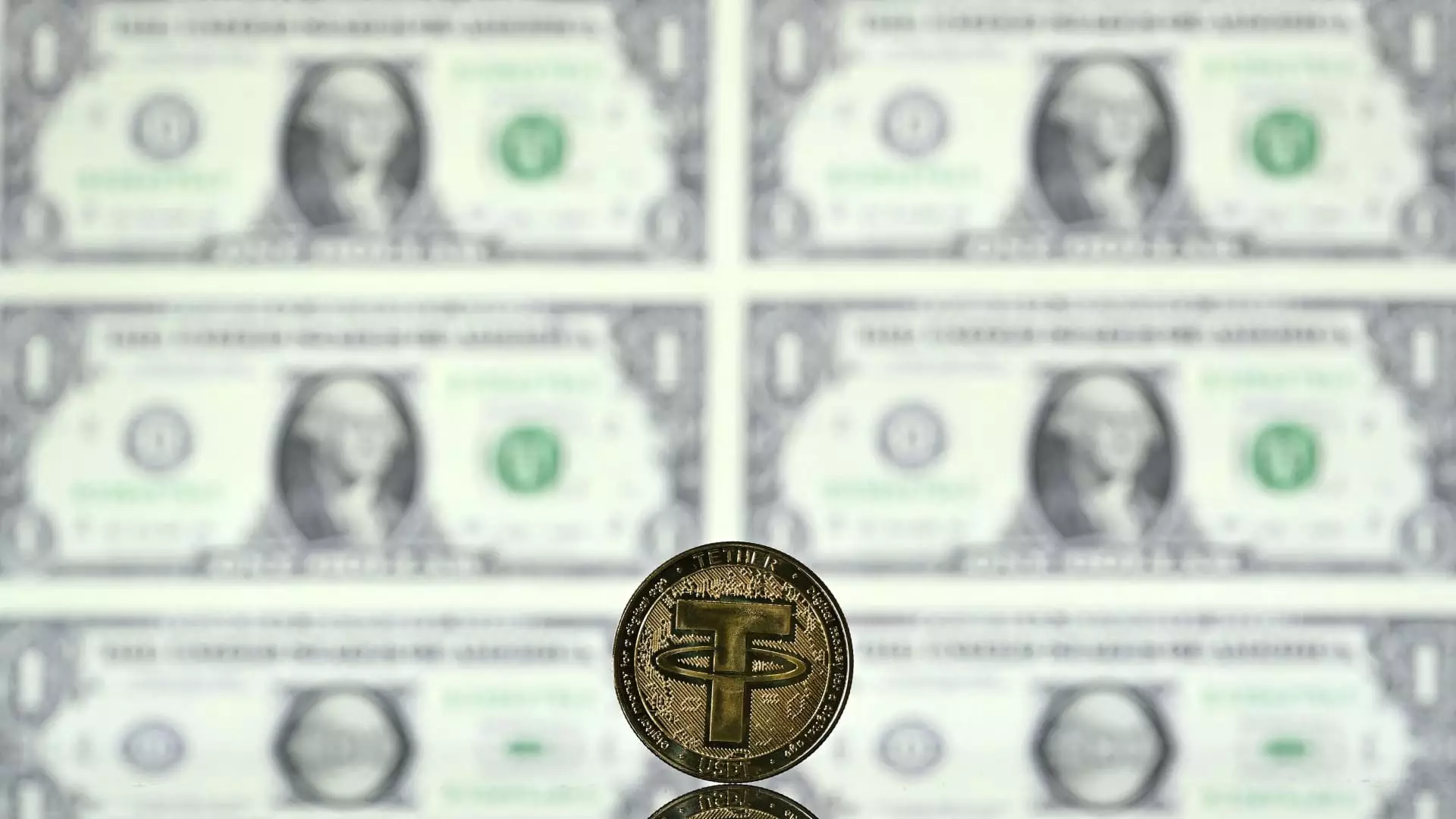The advent of stablecoins is about to revolutionize the cryptocurrency market, driven by the anticipated legislative clarifications surrounding their use in the U.S. If analysts at Standard Chartered are to be believed, we could be looking at a staggering growth of stablecoin assets to $2 trillion by 2028. This is a colossal leap from the current $230 billion, and it signals a new era for the financial landscape—one where the U.S. dollar’s supremacy in global finance could be both fortified and showcased.
Stablecoins are not conventional cryptocurrencies that fluctuate wildly, but rather, they are tethered to reliable assets like U.S. Treasury bills. This stable nature makes them an appealing vehicle for transactions, particularly in decentralized finance (DeFi) markets. As the stakes get higher, it is crucial to consider what this substantial shift means for both investors and policymakers.
Legislation: A Double-Edged Sword
While the prospect of new legislation around stablecoins has potential benefits, it also raises significant concerns about the regulatory environment. The GENIUS Act and the STABLE Act are two legislative proposals currently making their way through Congress, aimed at establishing clearer guidelines for stablecoins. Clarity is undoubtedly welcomed; however, there is a delicate balance to be struck. Overregulation can stifle innovation, and the risk is that in an attempt to make the financial ecosystem safer, regulators may impose restrictions that will hinder creativity and competition within the space.
It is essential that lawmakers realize the unique nature of stablecoins and the innovative potential they hold rather than applying a one-size-fits-all regulatory approach. If done correctly, forward-thinking legislators can nurture a burgeoning industry that serves to uplift the U.S. economy while maintaining its competitive edge.
Demand Surge and Treasury Bills
The prediction that the stablecoin market could demand an astounding $1.6 trillion in new Treasury bills over the next four years reveals the extent to which these digital currencies could absorb U.S. debt issuance. This situation effectively positions stablecoins as significant players in the U.S. financial system—purchasing T-bills and subsequently enhancing the allure of holding U.S. dollars.
To put this in perspective, if stablecoins were to account for the largest flow of buyers across all U.S. Treasuries, it would fundamentally alter the traditional dynamics of how these securities are perceived and utilized. The ramifications are significant: reinforcing the dollar’s status as the world’s leading currency amidst ongoing trade tensions that have contributed to its weakening at times.
Building a Strong Network Effect
As the adoption of stablecoins increases, their demand for U.S. dollars is expected to rise concurrently. This symbiotic relationship acts as a mechanism that could further entrench the dollar’s dominance—a powerful network effect that offers a unique foothold against burgeoning global alternatives. The significance of USD-backed stablecoins transcends their immediate financial utility and ventures into securing the long-term future of the dollar on the world stage.
The course of financial evolution points towards a digital landscape where the U.S. dollar remains central. If stablecoins can smoothly integrate with existing financial frameworks, they will not only foster more efficient transactions but also secure an indomitable status for the dollar as a primary currency in international trade.
Challenges on the Horizon
Nevertheless, the path ahead will not be without hurdles. As stablecoins intertwine with traditional financial systems, the risk of volatility still looms large. Investors must remain alert to the possibility of instability introduced by external geopolitical factors and shifts in investor sentiment. The actions of foreign governments and central banks could disrupt the stability that is supposed to underpin these digital currencies, presenting a paradox for their advocates.
Furthermore, while the strong demand for Treasury securities is promising, one must question the dependency that the stablecoin market is developing on U.S. dollar assets. Diversification is a critical principle in any robust financial strategy, and an over-reliance on U.S. government securities may lead to vulnerabilities in times of rapid economic change.
The Future Is Bright, but Cautious
Data-driven analysts and financial experts see a bright but complicated future for stablecoins and their integration into the global financial ecosystem. As the prospect of stringent regulations looms, the urgency to balance innovation with oversight has never been more pressing. If managed prudently, the evolution of stablecoins could rejuvenate the U.S. dollar, stampede towards a transformative financial architecture, and promote an era of economic empowerment. However, realizing this potential hinges on responsible management that promotes innovation while safeguarding the interests of the broader economy.

